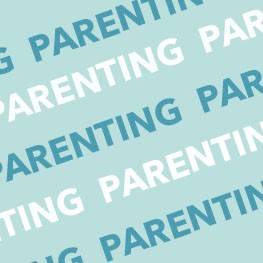
We bemoan the high divorce rate in society, but it is not all gloom and doom for kids. I am a child of divorce. I divorced myself and I facilitate co-parenting education groups for parents in conflict over separation, divorce or custody issues. Resiliency, creativity and tolerance can emerge from blending families after separation, divorce or death.
While I would not wish the pain of divorce on anyone - least of all children - there are some positive things blended family members learn that can benefit all of us:
1. Emotional endurance. Parents and children of blended families may struggle through conflict but they eventually learn you can live through, survive and thrive after a time of tremendous pain. Young children may not have enough experience to discern that this too shall pass. Children can be prompted and reminded to consider the reality that they don’t feel bad forever. Feelings are not permanent conditions. Older children have better experience at taking the long view of circumstances. Older children know that summer comes after the school year and that eventually the blended family situation will not feel new and strange.
2. Adaptability and flexibility. Even kids on playdates learn this. Parents often hear after a playdate, “Suzi’s mom doesn’t do it that way.” The empowered parent often responds, “You don’t live with Suzi’s mom.” Nevertheless, the observation points out a wonderful truth. Not everyone does things the same way. Learning to live with different people and different styles of conducting day-to-day life is a positive skill, which can help kids of blended families for years to come in their interpersonal and professional lives.
3. Self-reliance. Children of divorce have had their trust in others injured. It takes time to grieve, heal and risk trusting again. In the meantime, children can become quite adept at caring for themselves. Children of single parents and children of blended families may cook, wash clothes or work a part-time job for school clothes, school sports fees or to help make ends meet. Children of divorce may have had to take on the parenting role with younger siblings because parents are working. There may be positive side effects. Self-reliance in balance can be a very positive skill for academic success, post-secondary education life and finding a job.
4. Learn to do more with less. Blended families are often under financial strain. Parents and children learn how to meet family needs in creative ways. Family outings may be a walk in the park or a DVD with popcorn rather than a trip to the mall or theatre. Blended families tend to eat in more, cook more together or share the load of chores, simply because they must.
5. Maximize mentors. Children in blended families may also learn to rely on mentors to help ‘fill in’ the parenting role. Given our fast-paced lifestyle, all children can benefit from interaction with mentors; children of divorce with trust issues who may not readily open up to step-parents or parents who have recently divorced and/or remarried. Children may choose to reach out to positive role models such as teachers, coaches, parents of friends, church members or scout leaders. The process of reaching out helps children take emotional risks and grow their own support networks. In a society with less interpersonal conversation, learning to expand support systems is a very positive, lifelong skill.
Blending a family is a process. David L. Brashear, BCSW, and family therapist, says it takes approximately five years to blend a step-family. Like all of family life, there are ups and downs. Blending a family is a worthwhile process that can launch resilient and skillful children.
There are many helpful resources for blending families:
www.remarriagesuccess.com
www.helpguide.org/mental/blended_families_stepfamilies.htm
Laura is a parenting journalist and sociologist. She facilitates co-parenting education classes. Laura and her husband have blended a family with two daughters.
Calgary’s Child Magazine © 2024 Calgary’s Child